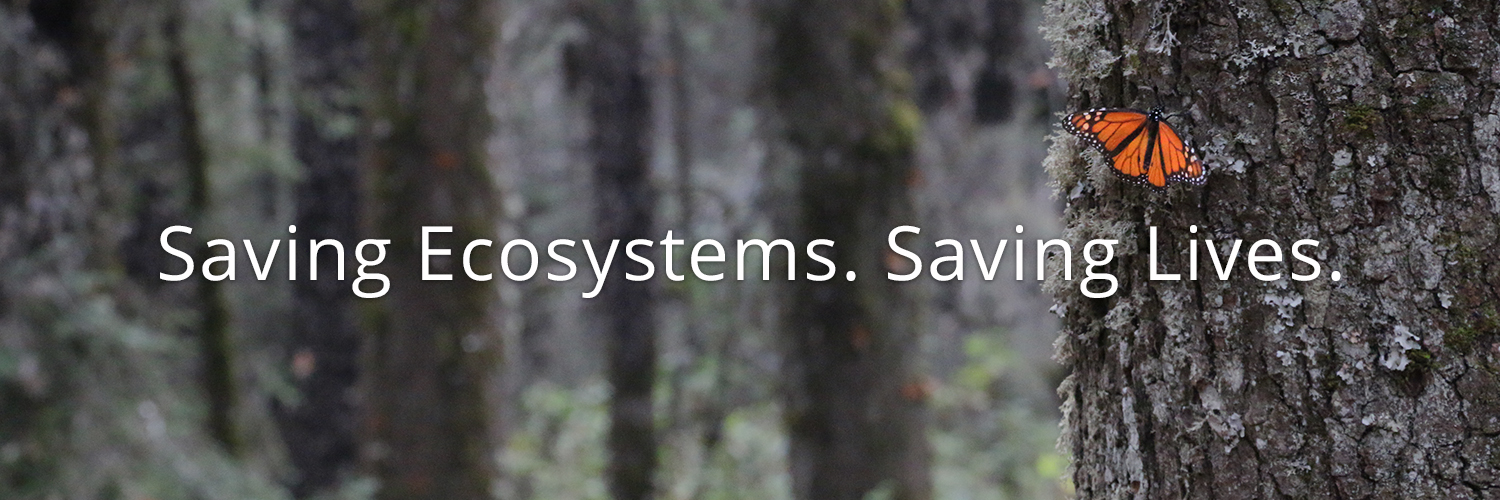Milkweed for Monarchs: How to Get and Care for Native Milkweed
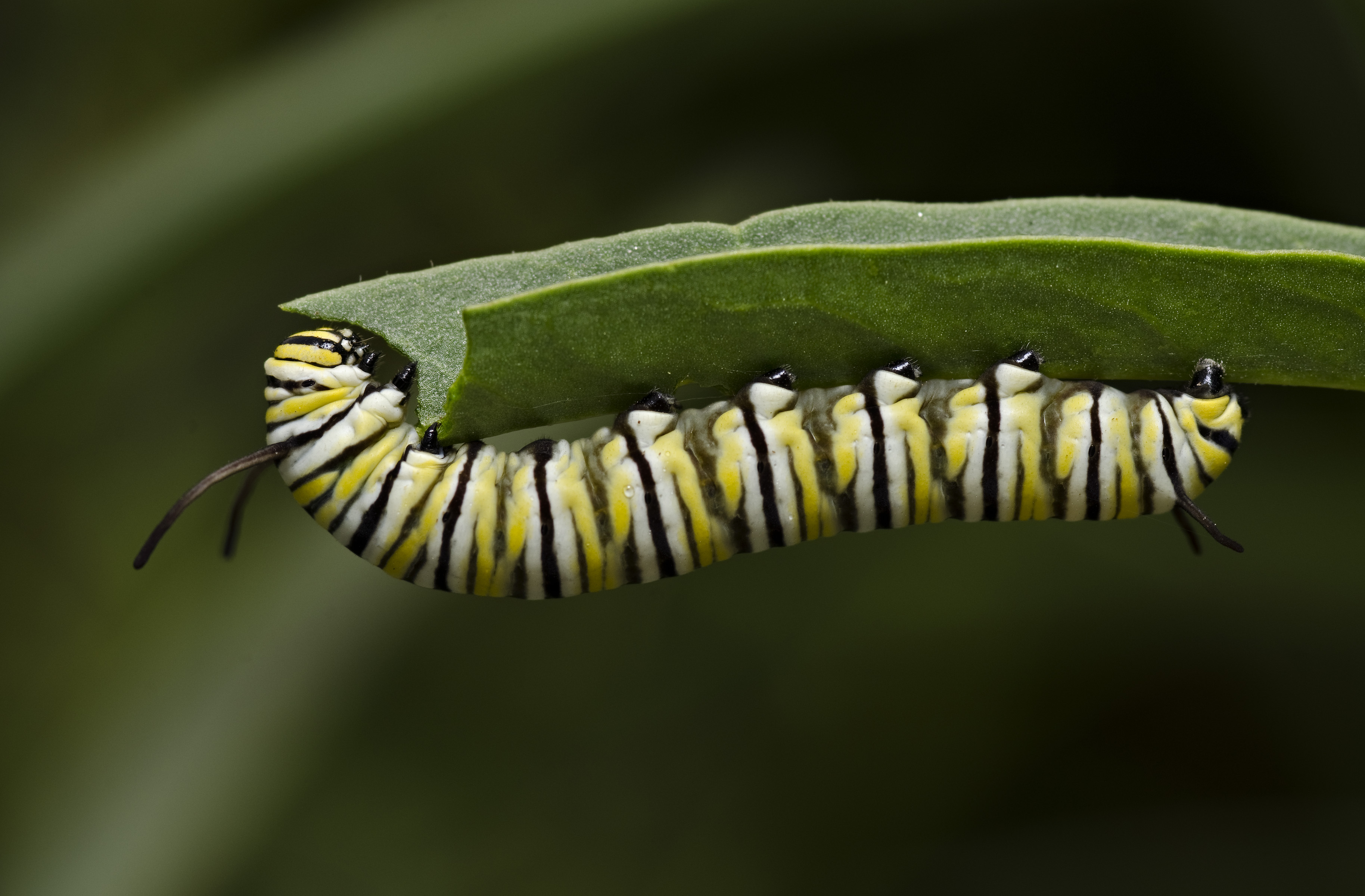
Milkweed for Monarchs: How to Get and Care for Native Milkweed
As the media continues to publish news of monarch butterfly populations’ steady decline, you may find yourself wondering what you can do to help save this phenomenal creature. Can an individual’s small actions really make a difference to such a large-scale problem? Absolutely: the most impactful way to help boost monarch populations is to conserve and restore monarch habitat. Planting milkweed in your garden is the single most important thing you can do at home to improve the monarchs’ chances.
Why Milkweed is Important
Monarch butterflies rely on their host plant, milkweed, for the most critical parts of their life cycle. Milkweed is the only plant on which the monarch will lay its eggs due to its toxic properties. When the eggs hatch, the larvae (caterpillars) feed on the leaves until they leave the plant to form chrysalises. They store the milkweed’s toxins away in a special organ that they carry through every phase of their lives to protect themselves from predators.
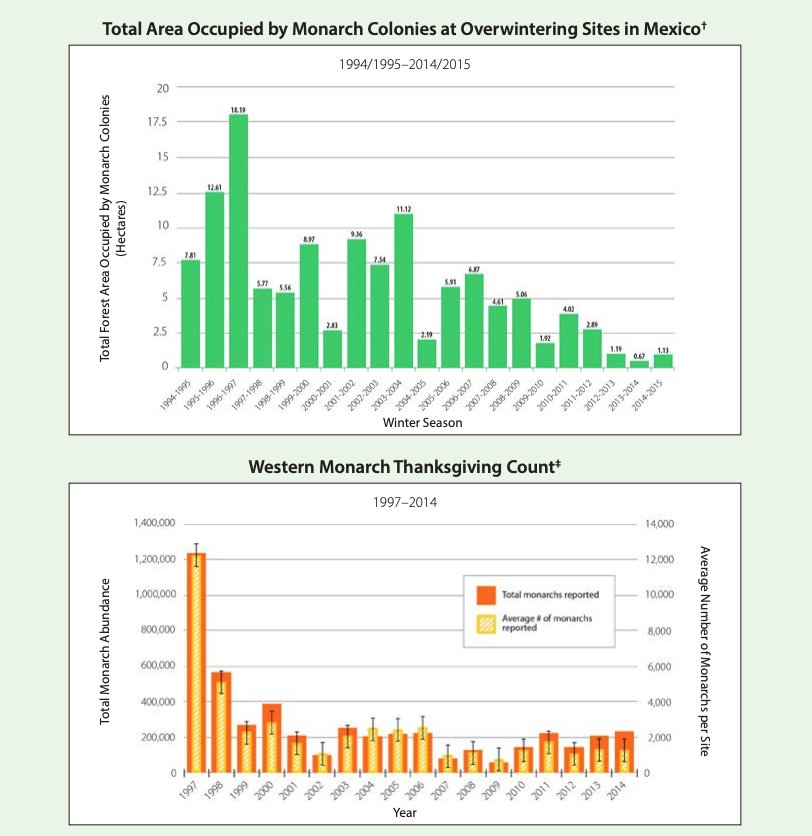
Western monarch populations have declined 99.4% since 1980 and reached their lowest point in 2018 (Xerces Society). The loss of milkweed in their spring and summer breeding areas is one of the driving factors behind the plummeting numbers of overwintering monarchs in California and Mexico. Agriculture, habitat clearing, rural land development, and the increased use of pesticides and GMO crops have wiped out native milkweed across the nation. Milkweed shortages result in the inability to hatch future generations, driving population decline.
In order to combat monarch population decline and protect pollinators as a whole, we must provide more milkweed habitat. We can create more monarch-friendly habitat by incorporating native milkweed in our gardens and landscapes.
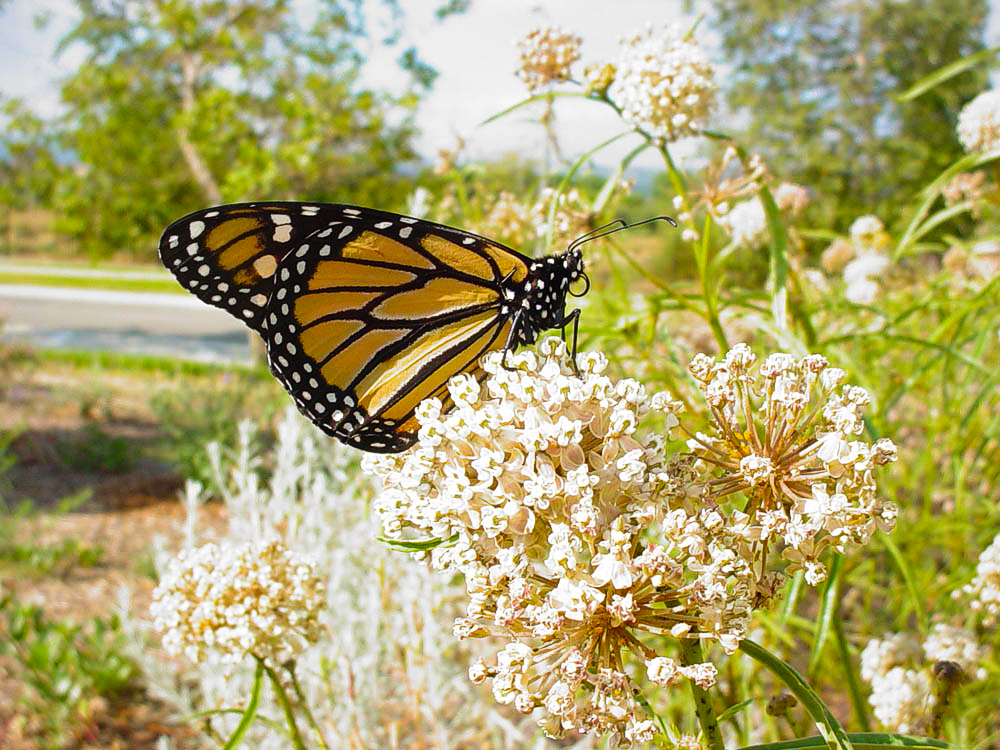
How to Get Milkweed Seeds
ECOLIFE recently launched our Milkweed for Monarch program to create more monarch-friendly habitat across California. We supply Narrow-Leaf Milkweed Asclepias fascicularis seeds to individuals across southern California who would like to take action to help restore monarch populations.
With a minimum donation of $5, you will receive a packet of milkweed seeds and planting guide to turn your garden into a sanctuary for monarchs and pollinators.
Your contribution will go directly to ECOLIFE’s programs, funding efforts to protect monarch overwintering habitats in Mexico and sustainable agriculture alternatives within the United States.
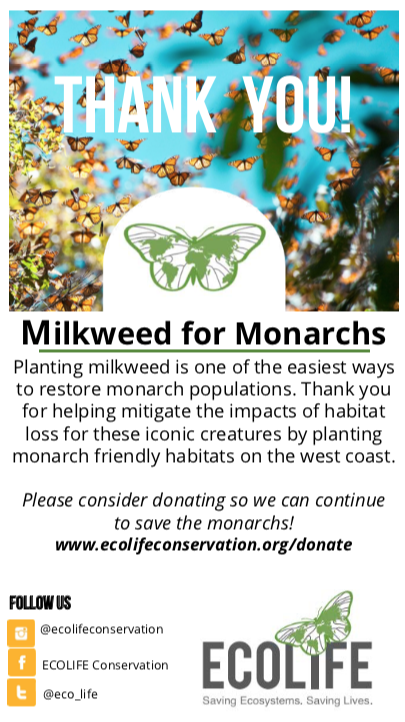
Caring for your milkweed
In summer, Narrow-Leaf Milkweed (Asclepias fascicularis) grow fragrant white or lavender flowers that are a beautiful addition to any garden. In addition to the visual element, planting milkweed provides food for monarch caterpillars and nectar for a diverse range of pollinators.
Germination
Seeds are sown directly into the ground in fall or germinated indoors in spring.
To plant seeds in fall, sow directly into soil about ¼-⅛ inch deep. The cold winter temperatures will stratify the seeds so that they will be ready to germinate with spring moisture and temperatures. Don’t worry if you don’t see seedlings for a while, you should expect them to come up in spring.
When planting in spring, germinate the seeds by wrapping them in a damp paper towel. Seal the seeds and paper towel in a plastic bag and store at room temperature. Once the seedlings have broken through their seed casings they are ready for soil.
Where to Plant
Find a spot in your garden with full sun partially sheltered from wind. Butterflies prefer to lay eggs in wind-sheltered areas. Quiet areas next to shrubs, fences, or walls are perfect locations for pollinator gardens.
Milkweed and monarchs do best in full to partial sun. Although milkweed will do fine in partial shade, more sun will encourage the most productive flowering, and monarchs use the sun’s energy to warm up. It is important to have productive soil that will encourage the milkweed to grow, amended soil with a neutral pH does best.
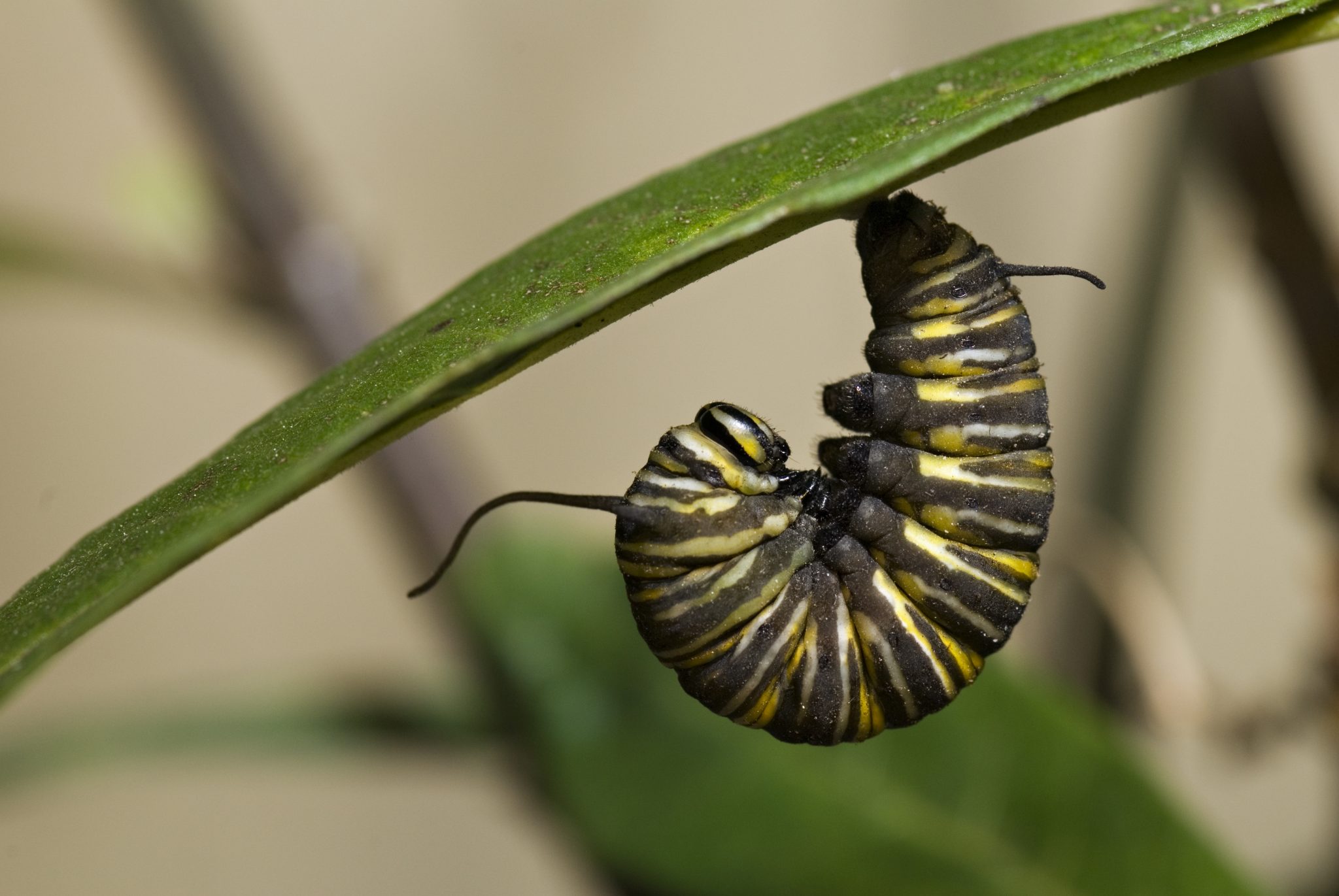
Timeline
Narrow-leaf Milkweed is perennial plant, meaning that it goes dormant for part of the year. Don’t be surprised that during winter months your milkweed will look like it’s dead. Unlike Tropical Milkweed, which retains its foliage all year, Narrow-leaf goes completely dormant in winter.
Starting around November, leaves will quickly yellow and begin to dry. Shortly after this, cut back the dead foliage to let it rest until the following spring, when it will burst out with a fresh season of growth.
Following the winter die back, the milkweed will explode with growth in spring and should flower in mid-to-late summer. Note that plants may not flower in their first year, but they will still attract monarchs. Monarchs should begin to lay their eggs in spring and you may find caterpillars spring to summer. Remember that host plants are meant to serve as food for caterpillars, so chewed leaves are a sign that they are doing their job!
Pesticide Concerns
It is vitally important to refrain from using pesticides, herbicides, or insecticides on your milkweed plant. Not only do they contribute to toxic run off, but they will also kill the milkweed’s caterpillars. These chemicals will also kill the other beneficial insects and microorganisms that keep your garden healthy.
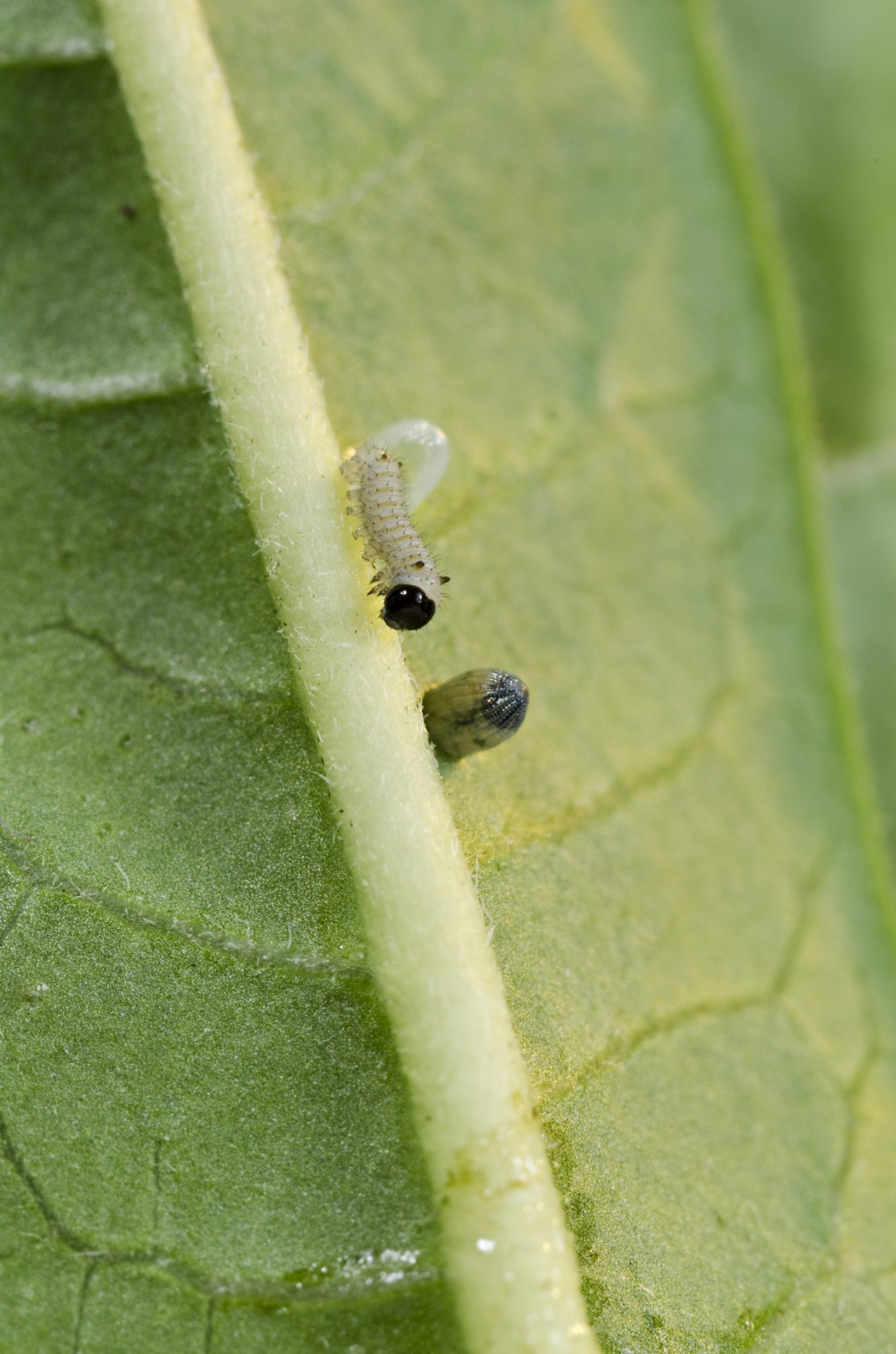
Watering and Spacing
Narrow-leaf milkweed evolved in California so it is a generally drought tolerant plant. When starting your seeds or seedling, keep the soil moist until the plant is fully established and then cut watering back to an as-needed basis. When starting the plant, water regularly but allow the soil to go nearly dry between each watering.
When germinating in soil, plant seeds ⅛ inch deep and 18 inches apart, using 3 seeds per hole. When germinating indoors, let the seedlings reach 1″ before planting in soil, spacing the individual plants 18 inches apart.
Happy Growing!
Any donation of $5 or more is eligible to receive a packet of Narrowleaf Milkweed seeds. To receive your packet, please confirm your shipping address by contacting ECOLIFE. Thank you for supporting ECOLIFE Conservation!
